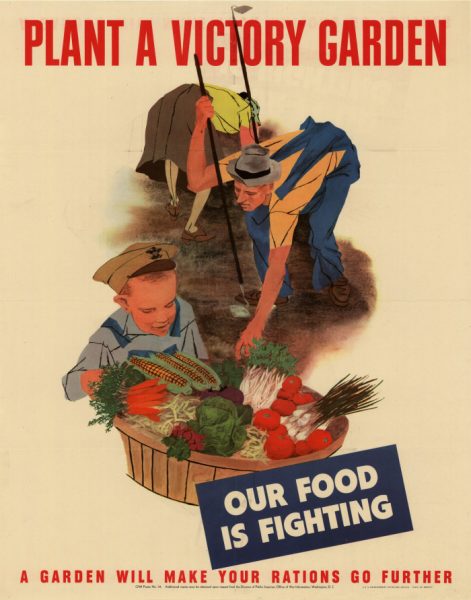
Victory gardens were a part of life on the home front during World War II. While farmers were encouraged to increase production to help feed the hungry soldiers, those living in urban and suburban areas were also encouraged to help the war effort by growing as much of their own food as possible. Eleanor Roosevelt even planted a victory garden on the White House lawn.
Many people who planted victory gardens were not experienced gardeners, or had only had small gardens before the war. So here in Colorado the Colorado State College (now Colorado State University) published a number of resources to help gardeners and small-size farmers learn the basics of home food production. Many of their publications focused on avoiding problems, such as diseases, which if controlled could lead to higher yield. One such publication, issued by the college’s Experiment Station, was Psyllid Control on Potatoes and Tomatoes in the Victory Garden. Other wartime Colorado State College publications included Increasing Home Vegetable Gardening and Starting Vegetable Plants.
The College’s Colorado Farm Victory Program published a series of brochures which included such titles as Alfalfa in Colorado; Diseases of Cucumber and Melons and Their Control; Concrete Tile for Sub-Irrigated Gardens; and Irrigation for Maximum Production. Farm Victory Program brochures also focused on home food storage to reduce waste. Some of these titles include Drying Fruits and Vegetables; Home Storage of Fruits and Vegetables; Preservation of Meat, Poultry and Fish by Freezing; Home Canning of Vegetables in a Pressure Cooker; Clean Milk and Cream: How to Produce Them; and even Pest Control on the Home Front. Search our library’s online catalog for more Farm Victory Program brochures and other titles.
- How to Spot the Differences Between Eagles and Hawks - August 16, 2021
- How Transportation Projects Help Tell the Story of Colorado’s Past - August 9, 2021
- Time Machine Tuesday: The Night the Castlewood Canyon Dam Gave Way - August 3, 2021